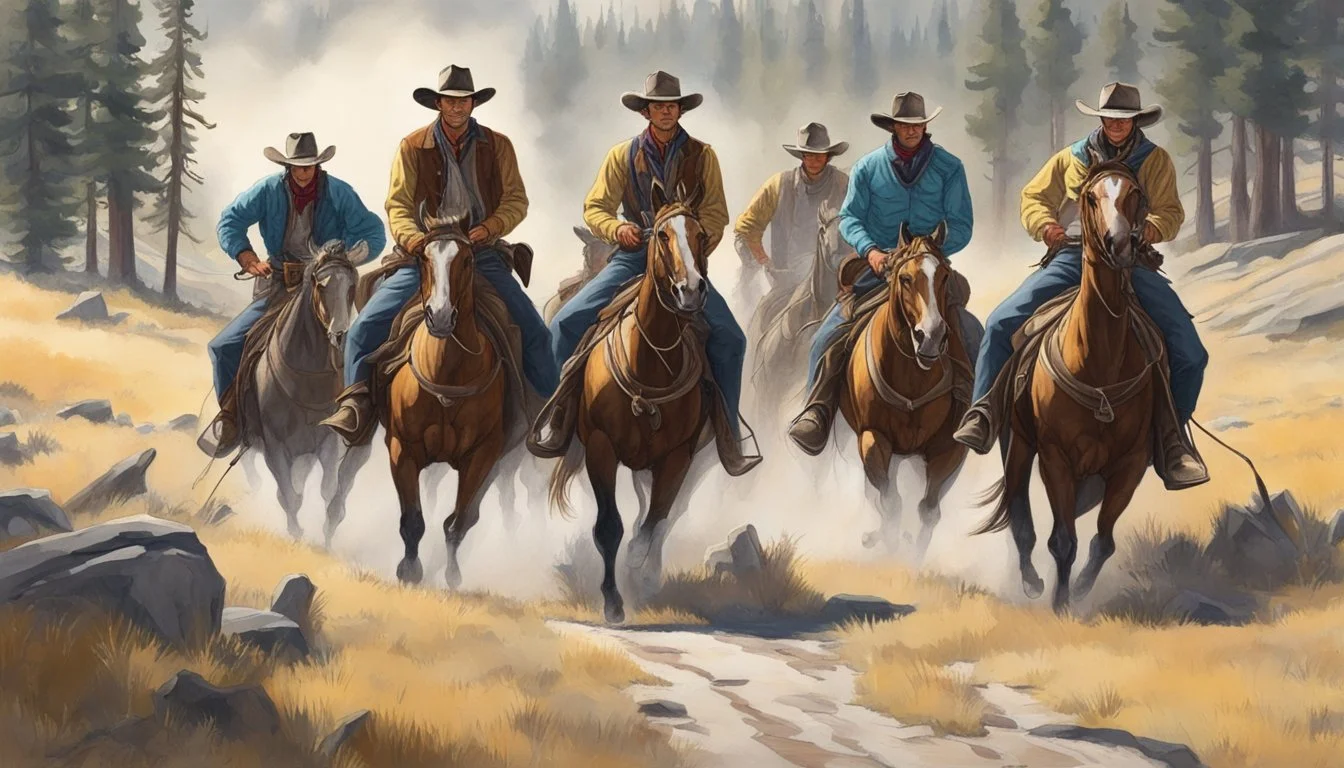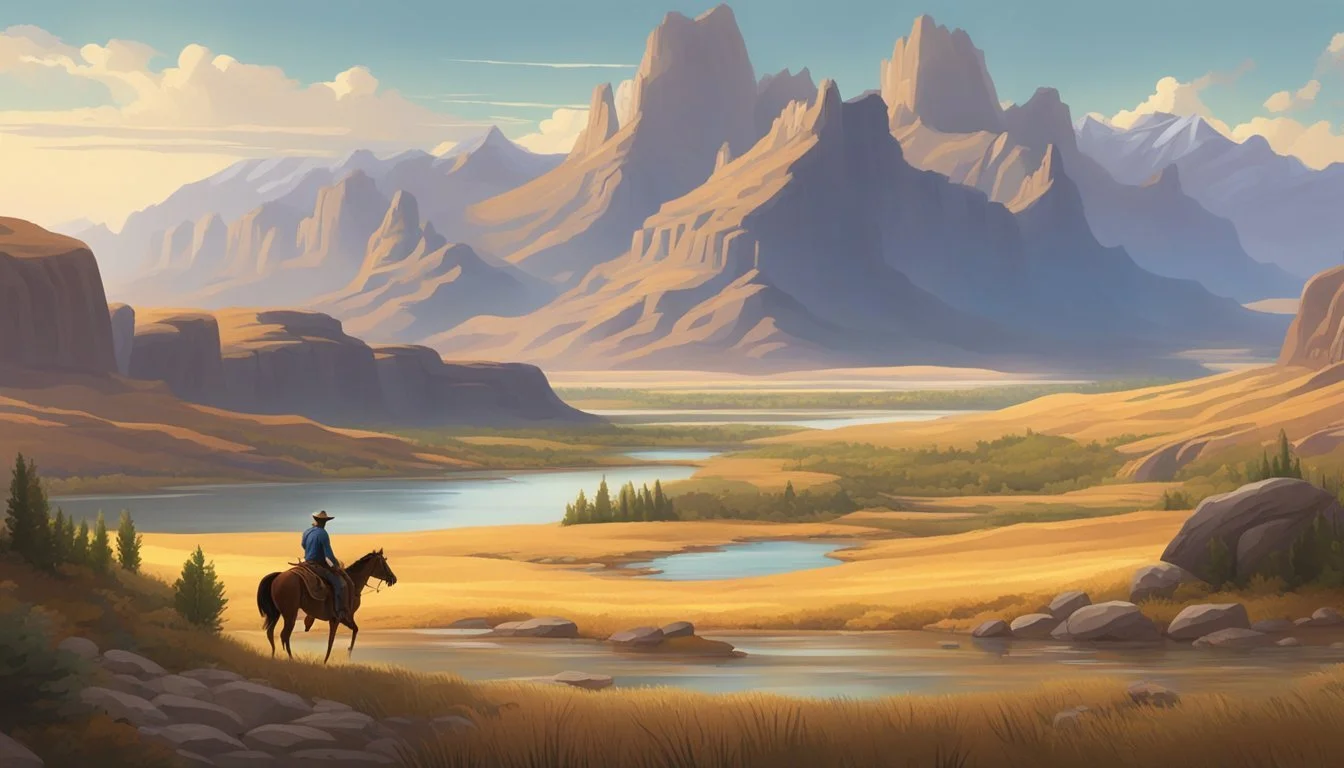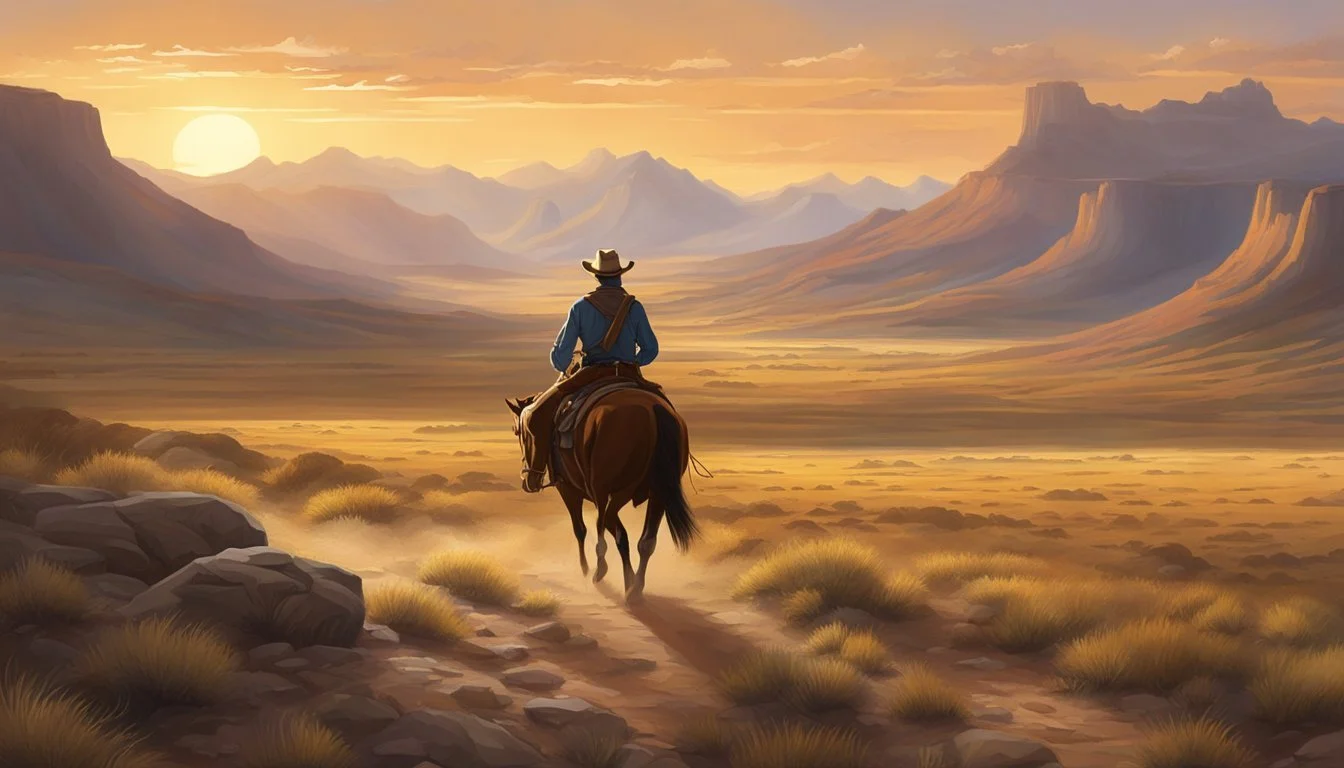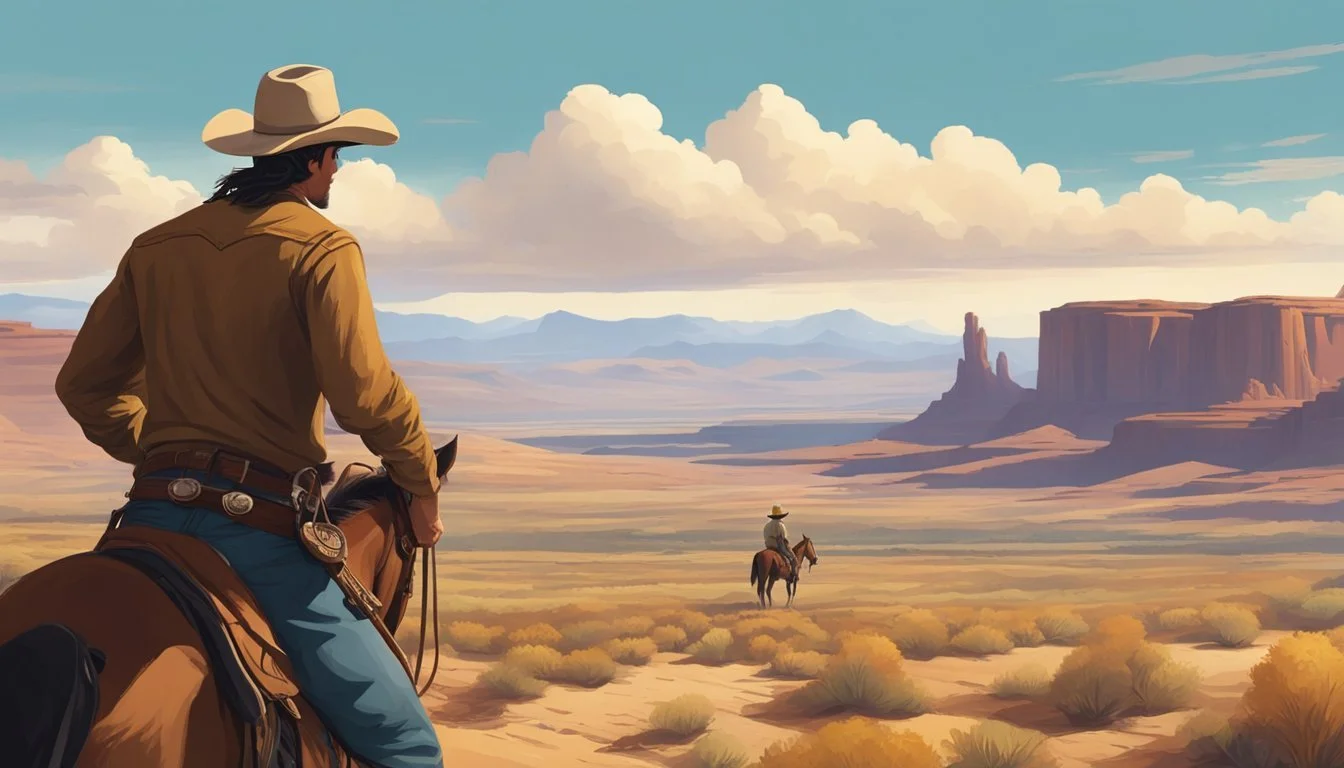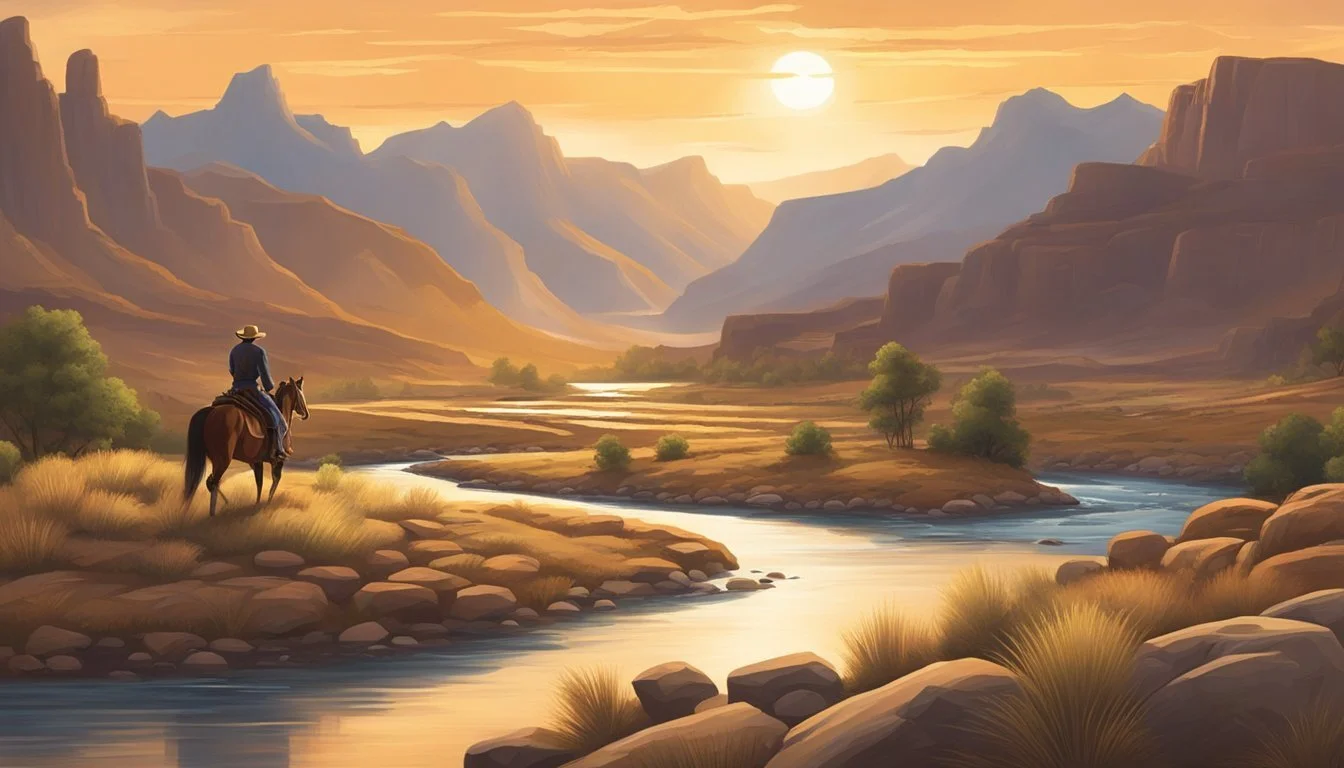Classic Western Influences on Yellowstone's Narrative Style
Exploring Cinematic Roots in Modern TV Drama
Yellowstone, the hit television series created by Taylor Sheridan, has redefined the Western genre for modern audiences. The show expertly blends classic Western elements with contemporary storytelling techniques, creating a unique narrative style that captivates viewers. Yellowstone's narrative draws inspiration from traditional Westerns while updating the genre for the 21st century, exploring complex themes of power, family, and land ownership in the American West.
Set against the backdrop of Montana's rugged landscapes, Yellowstone incorporates iconic Western imagery familiar to fans of classic films and TV shows. The series features sprawling ranches, horseback riding, and conflicts between ranchers and Native Americans. However, it adapts these elements to reflect current realities, addressing issues like land development, corporate interests, and political maneuvering.
Taylor Sheridan's cinematic approach to television storytelling elevates Yellowstone beyond typical Western fare. The show's intricate plot lines, morally ambiguous characters, and high production values contribute to its status as a contemporary Western drama. By seamlessly integrating classic Western influences with modern narrative techniques, Yellowstone has become a standout example of the genre's evolution in the 21st century.
Historical Context and Legacy
"Yellowstone" draws deeply from the rich tapestry of Western history and culture. The show weaves together elements from different eras to create a compelling narrative that resonates with modern audiences while honoring the legacy of the American frontier.
Influence of the Old West and American West
The American West serves as a powerful backdrop for "Yellowstone," shaping its characters and conflicts. The series taps into iconic Western themes like rugged individualism, land disputes, and the clash between tradition and progress. Dutton Ranch embodies the spirit of the Old West, with its vast expanses and cattle drives reminiscent of 19th-century frontier life.
The show explores the evolution of the cowboy archetype, presenting characters who embody both classic and contemporary Western values. This blend allows "Yellowstone" to examine how the ethos of the Old West persists in modern Montana, creating tension between historical practices and present-day realities.
Representation of 1883 and 1923
"Yellowstone" extends its historical reach through its prequels, "1883" and "1923." These series provide crucial context for the Dutton family saga. "1883" chronicles the family's arduous journey westward during the late 19th century, highlighting the challenges faced by pioneers.
"1923" bridges the gap between the frontier era and modern times, depicting the Duttons' struggles during Prohibition and the Great Depression. These prequels enrich the main series by illustrating how past events shaped the present-day Yellowstone Ranch and its inhabitants. They offer viewers a deeper understanding of the family's legacy and the historical forces that continue to influence their world.
Setting and Cultural Impact
Yellowstone's narrative draws deeply from Montana's rugged landscapes and complex cultural dynamics. The show's setting and characters reflect ongoing tensions between tradition and modernity in the American West.
Montana and the Yellowstone Ranch
Montana's vast wilderness provides a stunning backdrop for Yellowstone's drama. The fictional Dutton Ranch spans thousands of acres, mirroring real-life massive ranches in the state. Sweeping vistas of mountains, prairies, and forests create a cinematic canvas that shapes the characters' lives and conflicts.
The ranch itself becomes a character, embodying the Dutton family's legacy and the wider struggle for land control in the West. Its sprawling size represents both power and vulnerability, as various forces seek to claim or exploit it.
Environmental conservation emerges as a key theme, with the show exploring tensions between development and preserving Montana's natural beauty. This reflects real-world debates about land use in the state.
Role of the Dutton Family
The Dutton family, led by patriarch John Dutton, embodies the archetype of the modern Western rancher. They fiercely defend their land and way of life against encroaching threats from developers, government agencies, and rival interests.
John Dutton's character blends traditional cowboy values with savvy political maneuvering. His complex relationships with his children mirror broader generational shifts in ranching culture.
The family's internal conflicts and alliances drive much of the show's drama. Their struggles reflect real challenges faced by ranching families trying to maintain their heritage in a changing world.
Indigenous Communities
Yellowstone prominently features Indigenous characters and storylines, addressing historical and contemporary Native American issues. The show explores land rights disputes between the fictional Broken Rock Reservation and the Dutton Ranch.
Characters like Thomas Rainwater provide nuanced portrayals of Native American leaders navigating complex political and economic landscapes. The series touches on topics such as tribal sovereignty, cultural preservation, and economic development on reservations.
While the show has faced some criticism for its portrayal of Indigenous issues, it has also been praised for bringing Native American perspectives to mainstream television. Yellowstone highlights ongoing debates about reconciliation and coexistence in the modern West.
Core Themes in Yellowstone
Yellowstone weaves together complex narratives centered on family, power, and the struggle to preserve a way of life in the modern American West. These themes create a rich tapestry that explores the challenges faced by ranchers and Native Americans alike.
Family Loyalty and Survival
The Dutton family stands at the heart of Yellowstone's narrative. John Dutton, as patriarch, fiercely protects his legacy and land. His children - Kayce, Beth, and Jamie - navigate complex relationships while safeguarding family interests.
Loyalty is tested repeatedly as external threats emerge. The family's unity becomes both a strength and a source of conflict. Beth's unwavering devotion contrasts with Jamie's internal struggles.
Survival takes on multiple meanings. It's not just about keeping the ranch afloat financially, but preserving a cultural identity tied to the land. The Duttons face challenges from developers, politicians, and rival ranchers.
Power Struggles and Land Disputes
Land ownership forms the core of many conflicts in Yellowstone. The Dutton ranch, spanning hundreds of thousands of acres, is constantly under threat. Developers eye the property for its potential value. Native American tribes seek to reclaim ancestral territories.
Political maneuvering plays a crucial role. John Dutton's influence extends to state government, where he fights to maintain ranchers' rights. His opponents use legal and sometimes illegal means to chip away at his power base.
Water rights emerge as a key battleground. Access to this vital resource becomes a leverage point in negotiations and disputes between various factions.
Environmentalism and Conservation
Yellowstone doesn't shy away from addressing environmental concerns. The show explores the tension between traditional ranching practices and modern conservation efforts. John Dutton, while protective of his land, must also navigate changing regulations and public sentiment.
The series highlights the role of National Parks and protected areas. These serve as both a draw for tourism and a point of contention for those who see them as government overreach.
Wildlife management becomes a recurring theme. Predator reintroduction programs, particularly wolves, create friction between ranchers and conservationists. The show presents multiple perspectives on these complex issues.
Storytelling and Characterization
Yellowstone's narrative style draws heavily from classic Westerns while incorporating modern storytelling techniques. The show's complex characters and intricate plot weave together themes of loyalty, legacy, and survival.
Complex Characters and Moral Ambiguity
Yellowstone presents characters with depth and nuance, eschewing simplistic hero-villain dynamics. John Dutton, the family patriarch, embodies both admirable qualities and questionable ethics. His fierce loyalty to the ranch often conflicts with his role as a father.
Beth Dutton, John's daughter, is a prime example of the show's complex characterization. Her sharp wit and business acumen are matched by her vulnerability and past traumas. This multifaceted approach creates characters that resonate with viewers on multiple levels.
The show explores moral gray areas, forcing characters to make difficult decisions. This ambiguity keeps audiences engaged and invested in the characters' journeys.
Character Development of the Dutton Family
Yellowstone excels in portraying the evolution of its central characters over time. Kayce Dutton's journey from reluctant heir to embracing his family legacy showcases the show's commitment to character growth.
Rip Wheeler's transformation from ranch hand to trusted confidant illustrates the show's focus on earned loyalty and found family. His relationship with Beth adds depth to both characters, revealing new facets of their personalities.
The Dutton family dynamics shift and change as characters face new challenges and confront their own flaws. This ongoing development keeps the storytelling fresh and engaging throughout the series.
Production Elements
Yellowstone's production elements contribute significantly to its visual storytelling and authenticity. The show's cinematography, costume design, and creative direction elevate it beyond typical Western dramas.
Cinematography and Visual Impact
Yellowstone's cinematography captures the breathtaking landscapes of Montana with sweeping aerial shots and intimate close-ups. The show's visual style emphasizes the rugged beauty of the American West, using natural light to enhance the outdoor scenes.
Director of Photography Ben Richardson employs a cinematic approach, utilizing wide-angle lenses to showcase the vast expanses of the Dutton ranch. The use of warm color palettes during daytime scenes contrasts with cooler tones for tense night sequences.
Dynamic camera movements and carefully composed shots help convey the power dynamics between characters. The visual storytelling often relies on subtle facial expressions and body language, particularly in Kevin Costner's portrayal of John Dutton.
Costume Design by Johnetta Boone
Johnetta Boone's costume design plays a crucial role in establishing Yellowstone's authentic Western aesthetic. Her work blends traditional cowboy attire with modern fashion, reflecting each character's personality and status.
Boone's designs for Beth Dutton, played by Kelly Reilly, showcase a mix of feminine power suits and rugged ranch wear. John Dutton's wardrobe features classic Western elements like Stetson hats and leather jackets, reinforcing his role as a modern-day cowboy.
The costume design extends beyond main characters, with attention to detail in background actors' outfits. This creates a cohesive visual world that enhances the show's realism and period authenticity.
Contribution of Taylor Sheridan
Creator Taylor Sheridan's influence permeates every aspect of Yellowstone's production. His background as a former ranch hand informs the show's authentic portrayal of modern ranch life.
Sheridan's hands-on approach includes writing, directing, and producing. His deep understanding of Western culture and filmmaking techniques results in a unique blend of classic Western tropes and contemporary storytelling.
Under Sheridan's guidance, Yellowstone incorporates practical effects and real locations whenever possible. This commitment to authenticity extends to casting actual cowboys for supporting roles and filming on working ranches.
Social and Political Commentary
Yellowstone intertwines social and political themes with its Western narrative, offering commentary on contemporary issues affecting rural America. The show explores the tensions between tradition and progress, wealth and poverty, and power dynamics in Montana.
Gentrification and Corporate Greed
Yellowstone portrays the encroachment of wealthy outsiders and corporate interests on traditional ranch lands. Luxury resorts and real estate developments threaten the Dutton family's way of life. This storyline reflects real-world concerns about gentrification in rural areas.
The show depicts the clash between long-time residents and newcomers seeking to profit from Montana's natural beauty. Corporate entities, often portrayed as ruthless and manipulative, attempt to acquire land for commercial purposes. This struggle highlights the broader issue of economic disparities and the changing face of the American West.
Political Corruption and Ranch Life
Political maneuvering and corruption play significant roles in Yellowstone's plot. Local politicians, often in league with corporate interests, challenge the Duttons' control over their land. The show exposes the complex relationships between ranchers, government officials, and business leaders.
Yellowstone illustrates how political decisions impact ranch life and rural communities. Characters navigate a web of alliances and betrayals to protect their interests. The Paramount Network series doesn't shy away from depicting the darker side of politics, including bribery, blackmail, and the abuse of power.
The show also explores how ranchers must engage with the political system to preserve their livelihoods and heritage. This portrayal offers insight into the challenges faced by rural communities in maintaining their traditions amid changing political landscapes.
Influence on Modern Media
Yellowstone's narrative style has profoundly shaped contemporary television and popular culture. The show's success has sparked a renewed interest in Western themes and aesthetics across various media platforms.
Cultural Resonance and Spin-offs
Yellowstone's cultural impact extends far beyond its original series. The show has spawned two successful spin-offs, "1883" and "1923," each exploring different time periods within the Dutton family saga. These spin-offs have expanded the Yellowstone universe, providing historical context and deeper character development.
The popularity of these shows has led to increased demand for Western-themed content across streaming platforms and traditional networks. Viewers are drawn to the complex family dynamics, power struggles, and stunning landscapes portrayed in Yellowstone and its spin-offs.
Yellowstone's Impact on Cowboy Culture
Yellowstone has revitalized public interest in cowboy culture and the modern ranching lifestyle. The show's portrayal of contemporary cowboys and ranchers has influenced fashion trends, with Western-inspired clothing and accessories gaining popularity.
This renewed fascination with cowboy culture has also sparked tourism in areas where Yellowstone is filmed. Ranches and small towns in Montana have seen an influx of visitors seeking to experience the authentic Western lifestyle depicted in the show.
The series has also brought attention to issues facing modern ranchers, such as land conservation and conflicts with government agencies. This increased awareness has led to more nuanced discussions about the challenges of maintaining traditional ways of life in a rapidly changing world.
Conclusion
Yellowstone's narrative style draws heavily from classic Western influences while reinventing the genre for modern audiences. The show's creators have masterfully blended traditional Western elements with contemporary themes and complex characters.
Yellowstone has become a cultural phenomenon, captivating viewers with its portrayal of the American West. The series explores moral ambiguity, a hallmark of many classic Westerns, through its flawed and multifaceted characters.
The Dutton family saga echoes themes from iconic Western literature and film. Their struggles for land, power, and legacy resonate with timeless Western narratives. Yellowstone's sweeping Montana landscapes serve as both a stunning backdrop and a character in its own right.
The show's popularity has revitalized interest in the Western genre. It has introduced a new generation to the enduring appeal of frontier stories while addressing modern issues. Yellowstone's success demonstrates the continued relevance of Western themes in contemporary storytelling.

